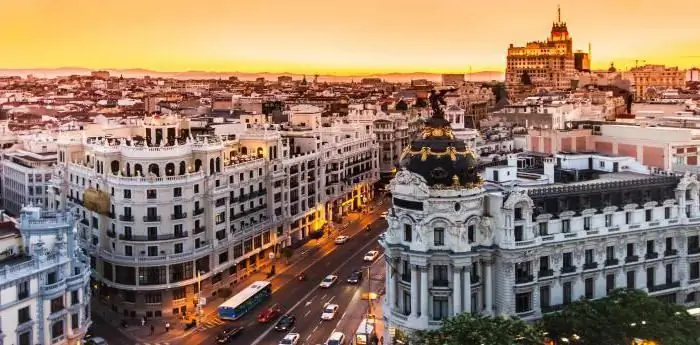- Author Harold Hamphrey [email protected].
- Public 2023-12-17 10:06.
- Last modified 2025-01-24 11:10.
Abandoned and deserted, majestic and mysterious… For most tourists visiting Europe, ancient castles are of particular attraction. Neuschwanstein in its popularity, perhaps, cannot be compared with any other. Its construction began on September 5, 1868 and continued for 17 years. It is located on the watershed of the Pollak River in the Bavarian Tyrolean Alps, on the border between Germany and Austria, in the village of Hohenschwangau. Why is this castle so different from other castles?

Neuschwanstein combines several architectural trends: here you can note the influence of the Baroque, Moorish, Gothic, Byzantine styles.
The building belonged to King Ludwig II of Bavaria. Neuschwanstein Castle, whose photographs delight many, is fabulous and unique. It resembles exquisite theatrical scenery. Its façade is adorned with garlands of balconies, towers and statues. Like other castles, Neuschwanstein inside has many different chambers and rooms, each with its own style.
Ludwig II of Bavaria had a special passion for the Middle Ages, but this did not stop himintroduce modern technologies in their residences. Like its other castles, Neuschweinstein is equipped with a heating system that functions by circulating warm air. The building also has a kitchen with running water.

If you have a chance to visit Bavaria: the Alps, local lakes, Munich, Neuschwanstein Castle, be sure to take it. The picturesque nature seems to be created for romantic adventures. The unusual setting of the castle, slightly gloomy, somewhat melancholy, contributed to the fact that this building has become a kind of embodiment of a fabulous place. The history of its owner is also interesting. The extravagance of Ludwig II was often reflected in his artistic vision, which consisted in a hatred of any restrictions. In 1866, Bavaria (in alliance with Austria) lost the war with Prussia. Ludwig became a vassal of the king of the victorious state, which seriously affected his pride and pride. And although he had other castles, Neuschwanstein had to compensate the owner for the loss of sovereignty and become his personal undivided kingdom - the embodiment of a dream. The king began to avoid people, indulging in fantasies all day long in the most remote corners of the castle. In 1886, Ludwig was declared insane and forced to sign an act of renunciation, and three days later his body was found in the lake. Just seven weeks after the death of the king, the castle became open to the public.

The road to Neuschwanstein leads along mountain paths. The rocks are reinforced with a net, since the ground on which it standscastle tends to crumble. Beautiful landscapes with gorges, waterfalls and mountain peaks make an indelible impression. For the decoration of his possessions, the old king hired a former theater artist who painted the walls with scenes from the history of Lohengrin, medieval legends. In the bedroom of Ludwig, the frescoes depict the fate of Tristan and Isolde, in other rooms you can admire the images of the Grail. A great lover of opera, the king was an admirer of Wagner. Therefore, the castle has halls decorated with scenes from the opera Parsifal. From the balcony of the throne room, you can enjoy views of the Alpsee lake and the sharp peaks of Tannheim.
"I remain an eternal mystery to myself and others," Ludwig of Bavaria once admitted to his associates. A pacifist king, a builder, a dreamer… After his death, he left a real work of architectural art. Spiritual life is encouraged in every possible way in the castle. For example, Wagner concerts are regularly held there. About half a million people visit Neuschwanstein every year. It is worth mentioning that the castle became the prototype of a fabulous residence for Disneyland.






